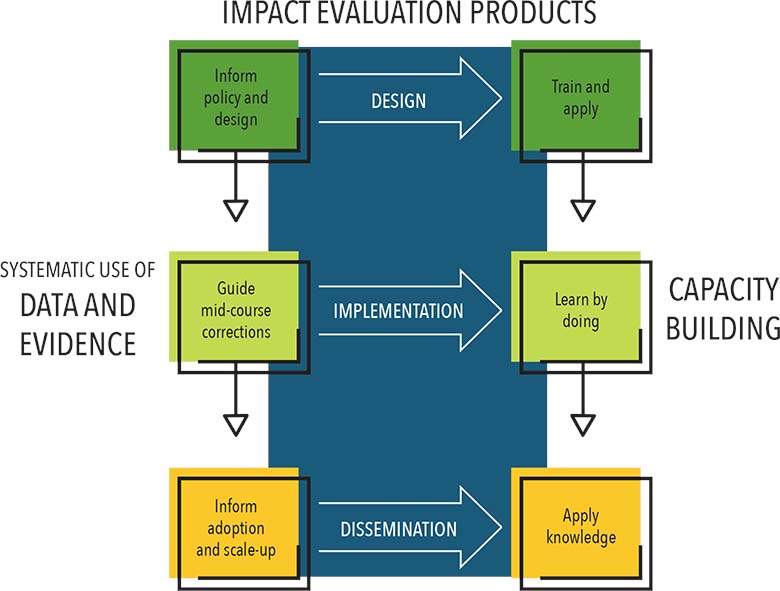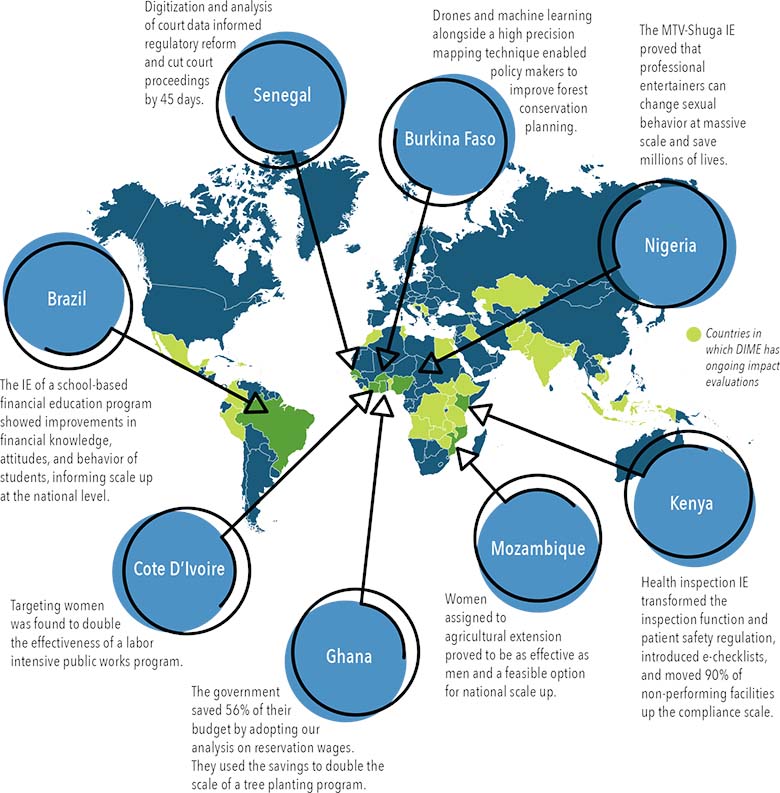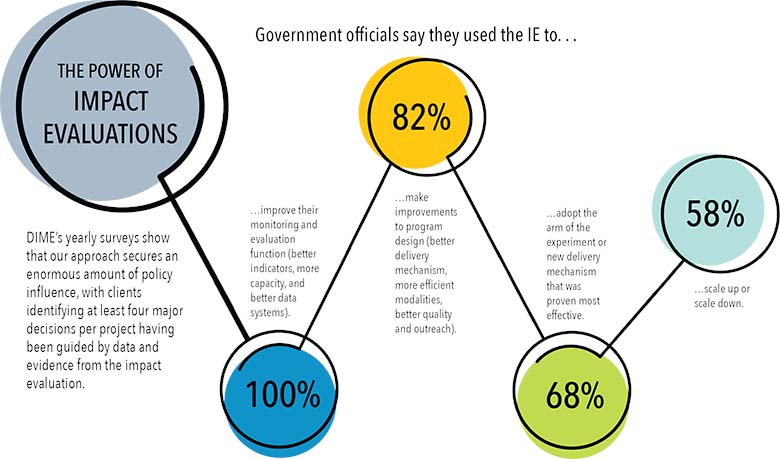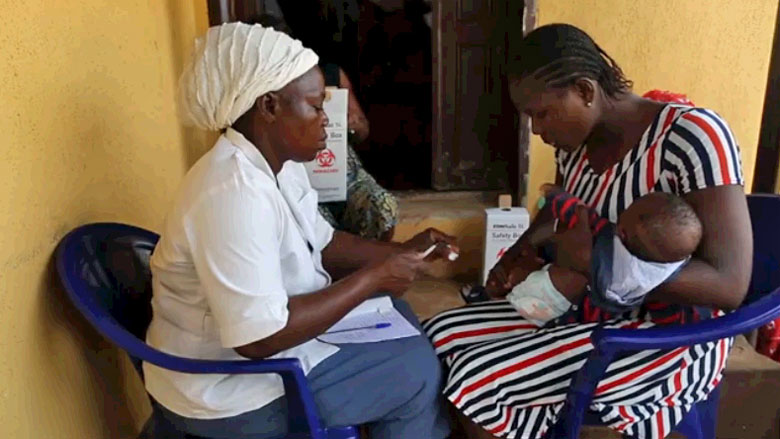The World Bank’s Development Impact (DIME) department generates high-quality and operationally relevant data and research to transform development policy, help reduce extreme poverty, and
The work is based on a co-production model aimed at transferring capacity and know-how to partners to make mid-course corrections and scale up successful policy instruments to achieve policy outcomes.
These corrections increase the rate of return of underlying investments by large margins, far exceeding the costs of the research. The group conducts research in 60 countries with 200 agencies leveraging a $180M research budget against $18B in development finance. It also provides advisory services to 30 multilateral and bilateral development agencies in the world.
Finally, DIME invests in public goods to improve the quality and reproducibility of development research around the world. From DIME Wiki to toolkits, training and summer schools, DIME is servicing the global community of researchers and, in so doing, improving the quality of global policy advice.





